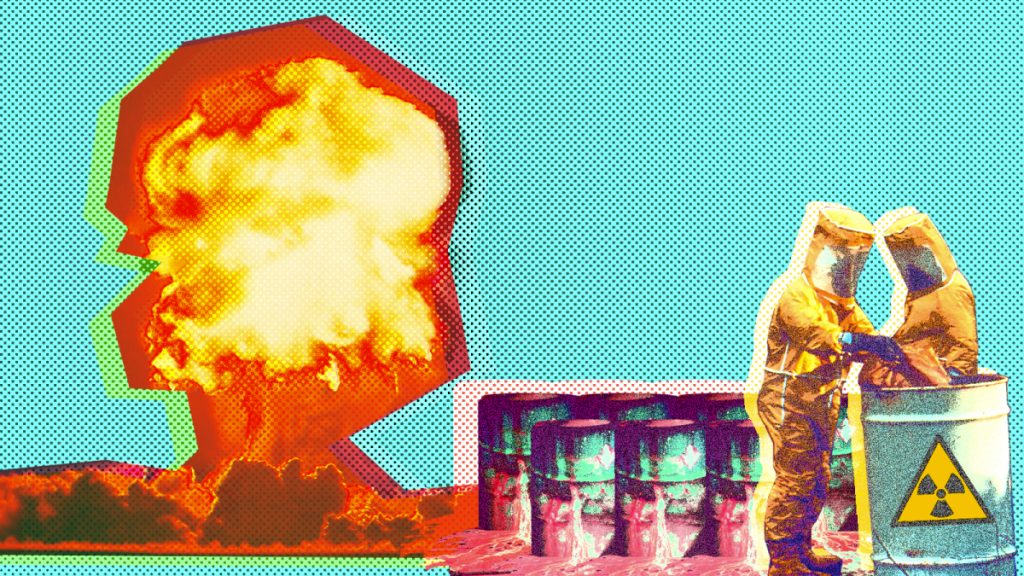Risks of Nuclear Weapons: Military Technoethics and Nuclear Ethics
Introduction
In this study, I have selected the Computer and Engineering Technoethics topic to complete my work. This topic deals with issues concerning military technoethics and nuclear ethics that are our focus. New technologies and military technologies are associated with many challenges on technoethics (Luppicini, 2010). The development of weapons has been widely spread and used in the world today. Among them are nuclear weapons, which are the most dangerous weapons invented. Nuclear weapons are very destructive, cause unspeakable human suffering, and there I no way to predict their impacts and effects in space and time. This paper identifies and explains the actual and possible risks associated with nuclear weapons.
Nuclear weapons have radiations that are ionized and cause harmful health impacts to those exposed to the radiation. The exposure of those radiations alters the genes DNA of animals, plants, and human beings, leading to severe consequences. For instance, the genetic mutations induced by the Hiroshima and Nagasaki bombing radiations led to many deaths and left the survivors with cancerous tumors (Amrute, 2019). The genetic mutations reduce fertility and reproductive capacity and induce changes in newborns’ appearance, like baldness and extra limbs. The surviving animals and individuals from nuclear bombing absorb the deadly radiations that alter their genetic structure.
Furthermore, when radioactive substances are exposed to the atmosphere, the reactive particles can penetrate the stratosphere, leading to global warming and global fallout. This is because the harmful radiations may destroy the ozone layer, causing depletion and formation of atmospheric windows (Malamud, 2018). It creates a way for ultraviolet rays to penetrate the earth, leading to severe climate change and loss of biodiversity.
The growing technology also increases the risk of using nuclear weapons. For instance, advances in artificial intelligence, offensive cybercrimes also influence military behavior. Research shows that this could add another risk of using nuclear weapons. Also, cyberattacks and malicious activities may manipulate the information that interferes with the nuclear weapon’s operation and order them to launch the weapons. Implementing interventions that only focus on minimizing the risks that modern technology poses to the use of nuclear weapons is not enough.
On the other hand, nuclear weapons cause insecurity and are a direct threat to people globally. Even though nations agree on keeping the peace, some don’t trust and fear other nations. This is because nuclear weapons trigger national and global insecurities. Besides, the risk of nuclear weapons proliferating into countries has been on the rise. Many nations have invested in nuclear weapon programs though they have been encouraged to quit the programs. The risks associated with the acquisition of nuclear weapons in relation to terrorists are alarming. Terrorists can trigger nuclear catastrophe and expose the public to risks of nuclear attacks. When a nuclear bombing I executed; the intense heat, radiation, blast wave, and radioactive fallout lead to massive destruction and death and trigger an extensive displacement of humans and geographical features (Oshodin & Aloulabi, 2019). Besides, it negatively influences the environment, social order, infrastructure, and socioeconomic development. Exposure to nuclear radiation leads to long-term impacts that result from nuclear testing and nuclear use.
Conclusion
The actual and possible risks associated with nuclear weapons are diverse and affect the global climate, ocean acidification, environment, and human health. There is a need for further research to be conducted to help understand the consequences nuclear weapons pose on humans and the environment. Besides, reliance on modern technology in decision-making should be accurate to minimize the delivery of inaccurate information that would trigger the probability of unnecessary escalation.







